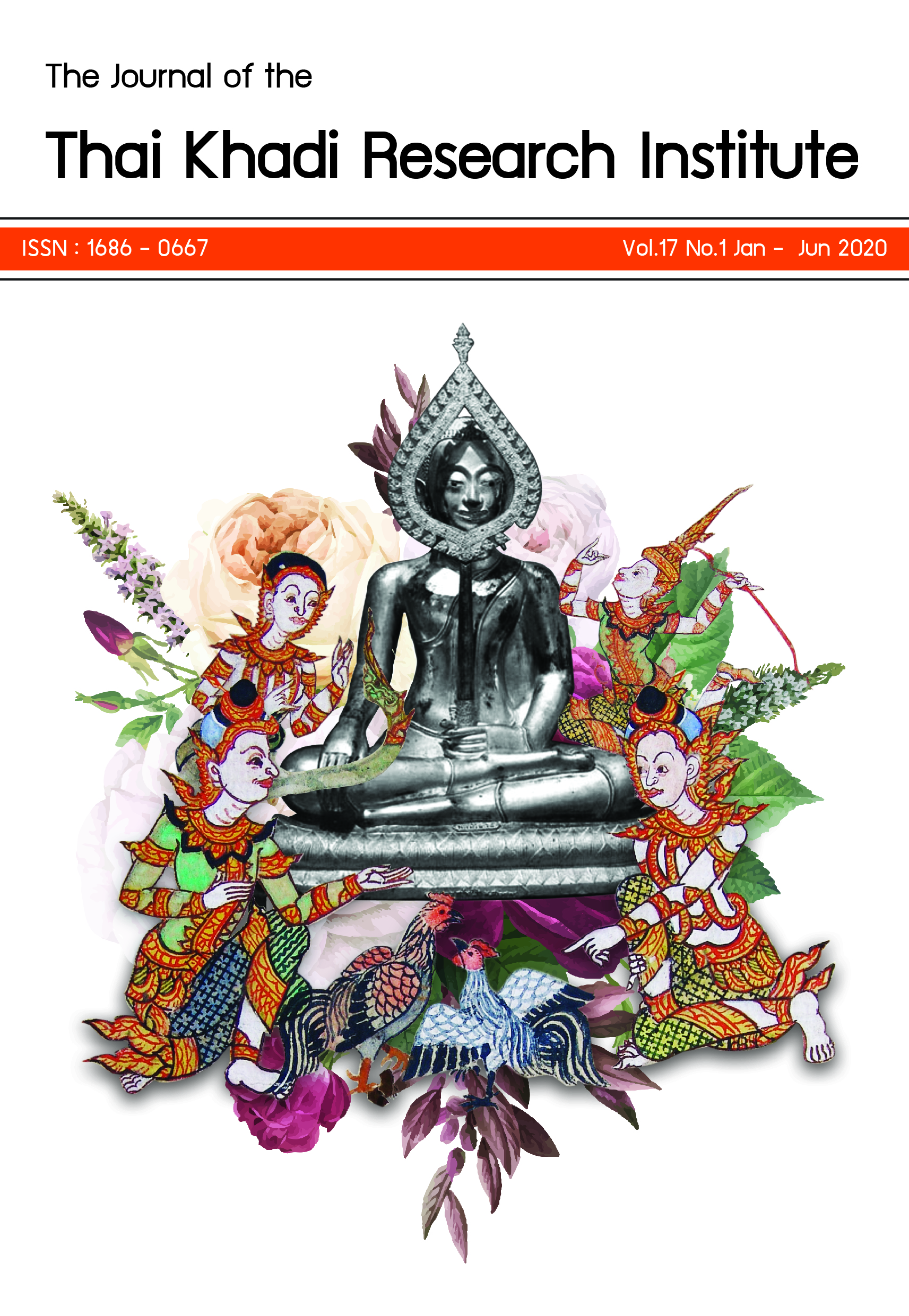Paintings of the Book Sastra: Formats, Folklores, Beliefs and Reflections of the Southern Thai Culture during the 20th Century A.D.
Main Article Content
Abstract
This article aims to analyze the forms and techniques used in the illustrations of Sastra, the Book of Fortune found in the southern part of Thailand, as well as the ideas and inspirations of the artists. It also explores through the illustrations the relationship between the capital city and southern provinces and the adoption of foreign culture in those provinces. The study is a comparative analysis of Sastra illustrations, mural paintings of the same folklores in Bangkok and contemporary mural paintings in temples in the South.
Results show that the Sastra illustrations were a combination of Western and Thai traditional drawing techniques. They seemed to be less realistic compared to contemporary mural paintings in the same areas, especially the costumes formatting. However, it is possible that local artists who created the illustrations, mural paintings and shadow puppets might be from the same group of painters or influenced each other, using similar drawing forms and techniques to draw particular characters such as hermits, female characters and some male figures. Furthermore, the culture affecting the way of living among local people was portrayed mainly as costumes fashioned in the reign of King Rama V (1868 - 1910). The artists could have been inspired by the clothes of governors who worked in Nakorn Si Thammarat and Chumporn precincts, as well as officials who accompanied King Rama V to coastal provinces in the South upon his return from travelling abroad. Modernization of postal services and transportation also played indirect roles in cultural diffusion between the capital city and southern provinces.
Downloads
Article Details
There is no charge for paper processing and publication. Once the paper is under peer-review process, however, if the paper is withdrawn for any reason the author will be responsible for the expense of 3,000 Baht occurred in the review process.
References
Bunnag, P. (1973).Prawatsātthaisamaimai (tangtǣkānthamsonthi sanyābāoringthưng hētkāntulākhom phutthasakkarāt Sō̜ng phanhārō̜isiphok) [Modern Thai History (Since the Bowring Treaty to “October 1973 Event”)]. Academic Documents of 2204202 Modern Thai History, Department of Thai History, Faculty of Arts, Chulalongkorn University.
Chitmung, P. (2012). Čhitkamfāphanangnaiphraʻubōsotwatphatthanārām Čhangwatsurātthānī: Phāpsathō̜nsangkhomnaisa mai [Mural painting in the hall of Wat Pattanaram, Surat Thani province: reflection of society in the reign of King Rama V] (Master’s thesis, Graduate School, Silpakorn University).
Damrong Rajanubhub, Somdejkromphraya. (1965). Tamnānlakhō̜n ʻinao [Mythology of Inao]. Bangkok: Khlangvitthaya.
Duangta, S. (2008). Phāsākāičhākčhitkamfāphanangsakunchāngsong khlāthawatphōpathamāwāt ʻAmphœ̄mư̄angsongkhlā Watčha thingphra ʻAmphœ̄sathingphra læwatbāngklam ʻAmphœ̄bāngk lam Čhangwatsongkhlā [Body language from the mural paintings Songkla school at Wat Phopattamwistrict in Mueang district, Wat Jatingphra in Sathingphra district and Wat Kutao in Bangklam district, Songkhla] (Master’s thesis, Graduate School, Silpakorn University).
Leksukum, S. (2005). Čhitkamthai Samairatchakānthī Sām Khwāmkhitplīankānsadǣngʻǭkkǭplīantām [The mural painting during the King Rama III: Change the concepts, Expressions are changed]. Bangkok: Muangboran.
National Identity Office. (2000). Kāntǣngō̜kāithai: Wiwatthanākān čhākʻadītsūpatjubun Lēm Nưng [Thai Dress: Evolution from the Past to the Present, Volume 1]. Bangkok: The National Identity Office.
Paruchakun, W. (2013). Čhāk nangsư̄budō̜ Sū nākradā: Khwāmsamphanthāngwatthanathamwannakamkhō̜ngphāktaikapphākklāng [From “the Bud” to “the Paper”: The Cultural Relations between Southern and Central Thailand]. Rusamilae Journal, 34(3), 57 - 62.
Petchkaeo, Ch. (2005). Wannakamthaksin Wannakamkhatsan Lēm Sō̜ng [Thaksin Literature, Selected Literature Vol. 2]. Bang kok: The Thailand Research Fund.
Phaethong, B. (1997). Khwāmplīanplǣngthāngwatthanatham ʻannư̄angmāčhākkānsadetpraphātyurōp [Cultural change due to His Majesty King Chulalongkorn visit to Europe]. Silpa korn Journal, 40(2), 89.
Siam Commercial Bank Public Company Limited. (1999). Sārānukromwatthanathamthaiphāktai Lēm Sipčhet [Southern Thai Cultural Encyclopedia Vol. 17]. Bangkok: Thai Cultural Encyclopedia Foundation of The Siam Commercial Bank Public Company Limited.
Tansungnoen, Ch. (1984). “The Sāttrā” Wannakamphayākō̜nchīwit Čhākčhangwatnakornsīthamrāt [“The Sattra” literary prophecy life from Nakhon Si Thammarat] (Master’s thesis, Srinakha rinwirot University).
Thaksin University, The Institute for Southern Thai Studies. (1986). Sārānukromwatthanathamphāktai Lēmthī Siphā [Southern Thai Cultural Encyclopedia Vol. 15]. Bangkok: Amarin Print- ing Group Ltd.
Thapepong, P. (2009). Ngānwikhrǫnaimummǭngmai: Nǣokhitngān čhitkamphāppritsanāthamnairatchakānthī Sī [The new analy-sis: concepts of dhama riddle in the murals paintings during the reign of King Rama IV] (Master’s thesis, Graduate School, Silpakorn University).


